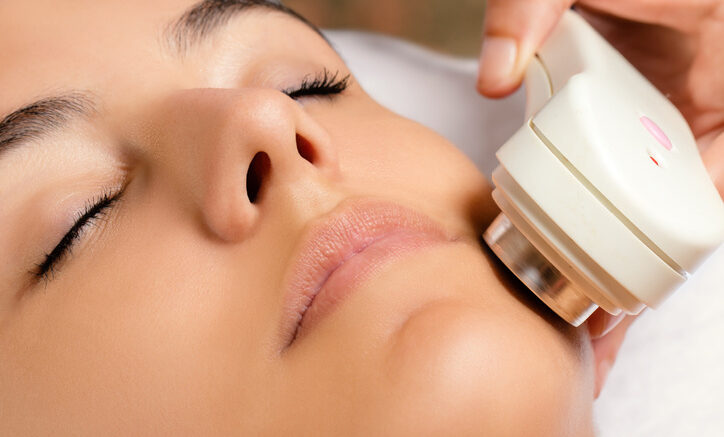Ultherapy is a type of cosmetic treatment that uses ultrasound energy to lift and tighten skin on the face, neck, and chest. This minimally-invasive procedure can be used to improve the appearance of aging skin, resulting in a more youthful appearance.
Ultherapy works by stimulating the production of collagen, the protein that helps keep skin firm and elastic. The ultrasound energy is transmitted deep into the skin, reaching the same layer targeted during a surgical facelift.
This causes the body to produce new collagen, which results in firmer, smoother skin. Ultherapy has been shown to be effective in reducing wrinkles and sagging skin, and it has very few side effects. The most common side effect is mild redness or swelling, which typically subsides within a few hours.
How much does Ultherapy cost, and what are the potential risks associated with it
With so many plastic surgery options available today, it can be tough to decide which procedure is right for you. One popular option is Ultherapy. Its cost can vary depending on the area being treated and the number of sessions required. The average cost is between $2000 and $6000.
Ultherapy is considered a safe and effective treatment for wrinkles and improves the appearance of aging skin, but there are some potential risks associated with it. These include pain, swelling, bruising, and skin irritation. As with any cosmetic procedure, it is important to consult a board-certified dermatologist to ensure it is right for you.
Just so you know, some of the issues that can make you a good or bad candidate for Ultherapy are:
- Your Expectations: First things first: you need to know what Ultherapy can and cannot do. This treatment is not a facelift and will not provide the same results. This procedure can help improve the appearance of wrinkles and sagging skin, but it is not a substitute for surgery. If you are looking for more dramatic results, you may be better off considering a surgical facelift.
- Your Health: Ultherapy is not recommended for people with certain medical conditions, such as cancer, diabetes, or heart disease. This is because the ultrasound energy used in the procedure can potentially aggravate these conditions.
- Your Age: Ultherapy is most effective in people aged 30-60. This is because the collagen-stimulating effects of ultrasounds are more pronounced in younger skin.
- The Medications you are taking: Certain medications can make you more sensitive to the ultrasound energy used in this procedure. These include blood thinners, acne treatments, and certain antidepressants. If you are taking any of these medications, you may need to stop taking them for a period of time before your Ultherapy treatment.
- Your lifestyle: Smoking and sun exposure can both contribute to the aging of your skin. If you smoke or spend a lot of time in the sun, you may not be a good candidate for Ultherapy.
What to Expect During an Ultherapy Treatment
Ultherapy is a minimally-invasive procedure, which means there is no need for anesthesia or surgery. The procedure is performed in the office of a board-certified dermatologist or plastic surgeon.
During the procedure, the doctor will clean your skin and apply a gel to help the ultrasound energy move more easily through your skin. A small, hand-held device will be used to deliver the ultrasound energy to the treatment area.

You may feel a warm sensation as the ultrasound energy is delivered, but this should not be painful. The procedure typically takes 60-90 minutes, depending on the size of the treatment area.
After the procedure, you can expect some redness and swelling. These side effects should subside within a few hours. You may also experience some bruising, which should resolve within a week or two. It is important to avoid sun exposure and strenuous activity for 24 hours after the procedure to minimize your risks of side effects.
How long will Ultherapy Results Last?
One of the most important things to know about Ultherapy is that it works by stimulating your body’s own collagen production. Collagen is a structural protein that gives skin its firmness and elasticity.
As we age, our bodies produce less collagen, which leads to wrinkles, sagging skin, and loss of definition in the face and neck. Ultherapy jumpstarts the collagen-producing process by delivering focused ultrasound energy to the deep layers of skin.
This energy triggers a natural response in the body that regenerates new collagen over time. So, while you will see some immediate results after your Ultherapy treatment, the full effect will build gradually over the next few months as new collagen is produced.
Most patients see optimal results from Ultherapy six to twelve months after treatment. However, because collagen production continues for months or even years after Ultherapy, some patients see continued improvement for up to two years or more.
Additionally, Ultherapy results tend to be cumulative, so patients who have multiple treatments usually see longer-lasting results. To help prolong your Ultherapy results, we recommend following a healthy lifestyle and using good skincare products that protect and nourish your skin.
Sun protection is especially important because sun damage can cause collagen fibers to break down. And facial massage can also help to increase circulation and stimulate collagen production.
So, Is Ultherapy a Waste of Money?
No, it’s not a waste of money. However, there are a few things to keep in mind before deciding whether Ultherapy is right for you.
First, it’s important to understand that this type of skin rejuvenation is not cheap, so if you find an offer that is too cheap, the overall quality of the procedure is likely going to be low. Second, the results will vary from person to person, so it’s important to set realistic expectations going into the procedure.
Finally, be sure to consult with a qualified medical professional before making any decisions about cosmetic surgery. This way, you can be sure that you are making the best decision for your unique needs and goals.
